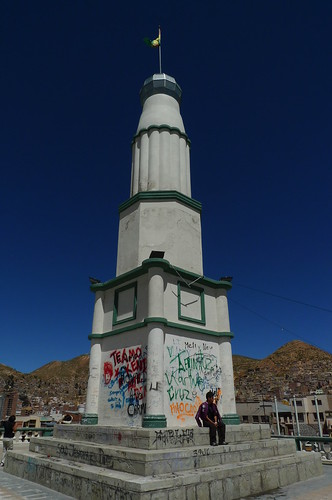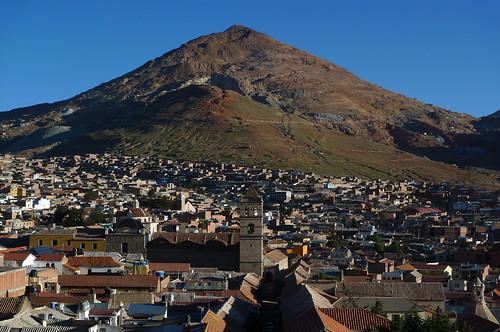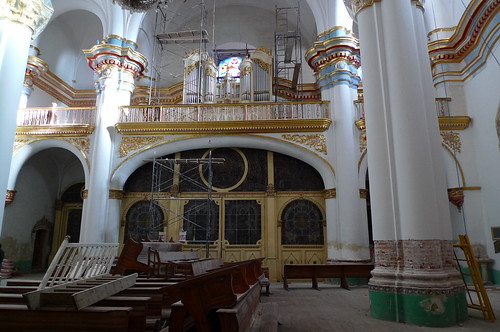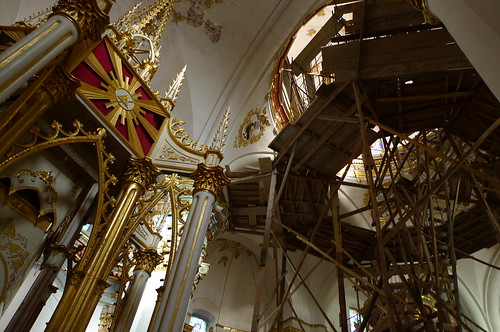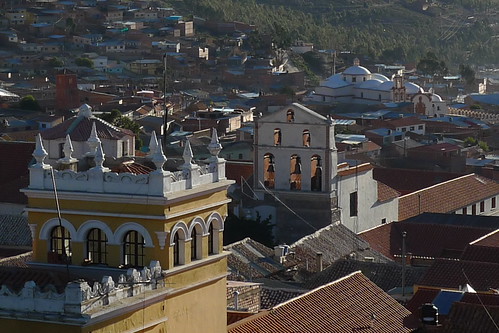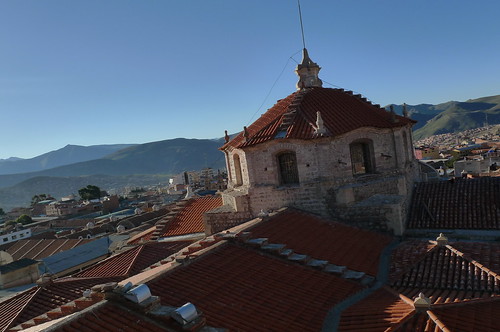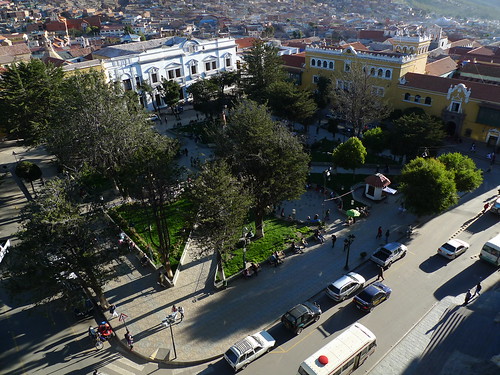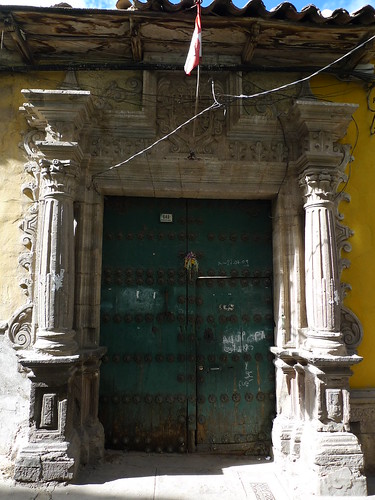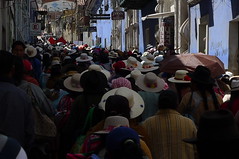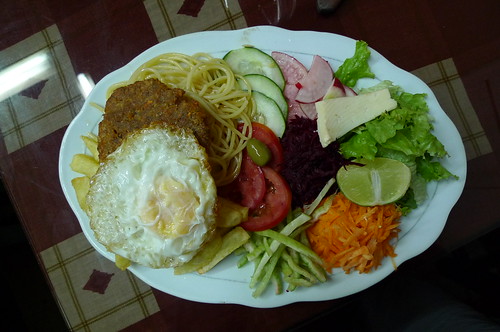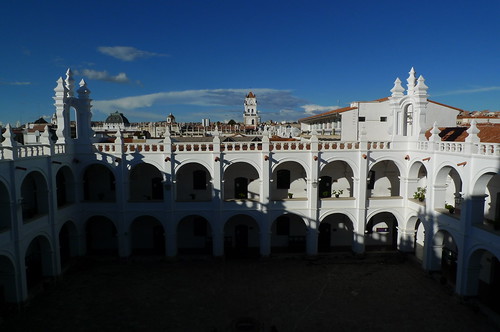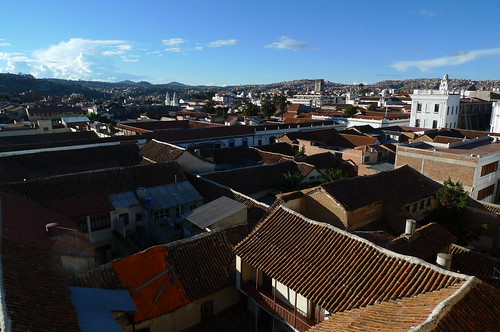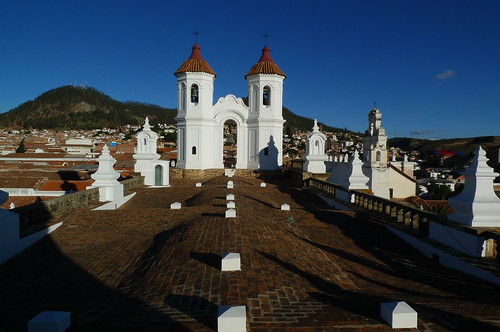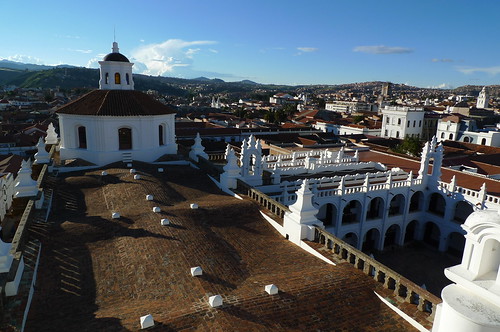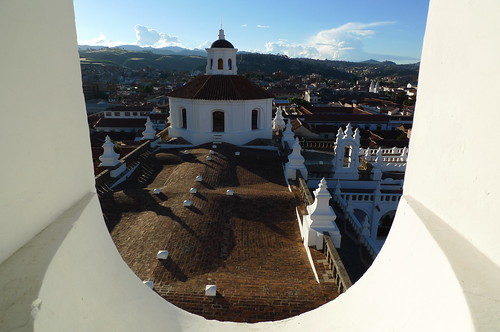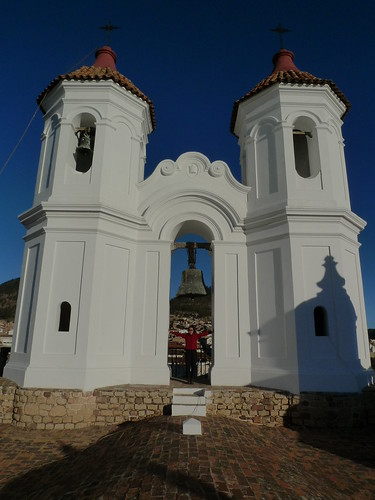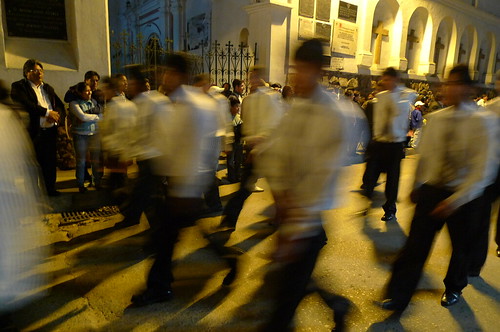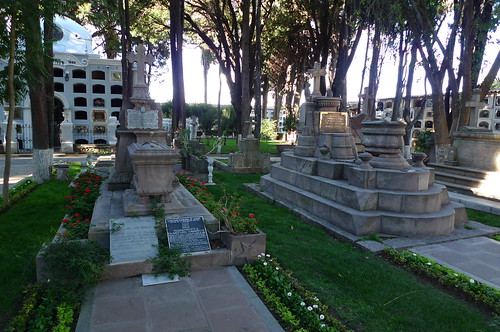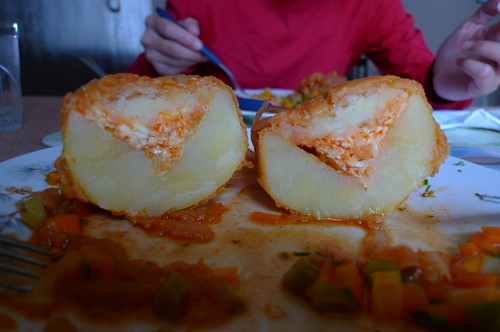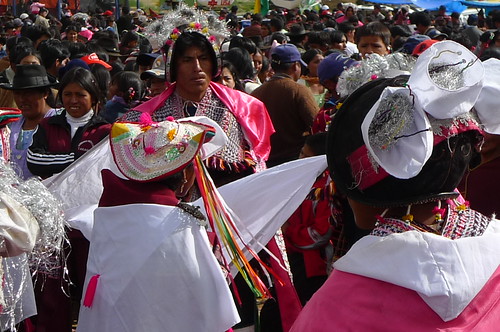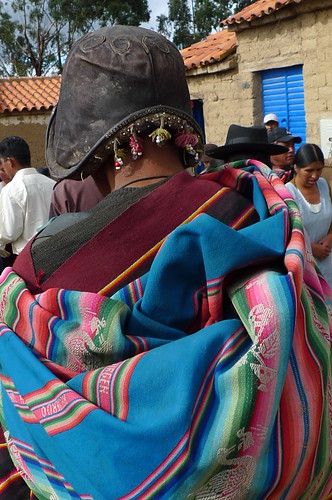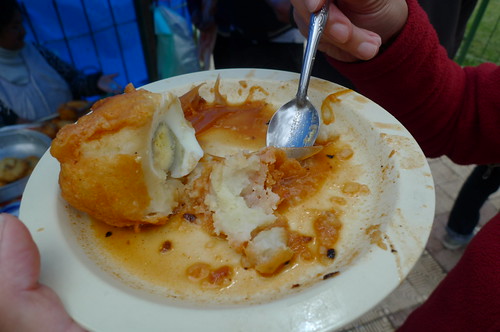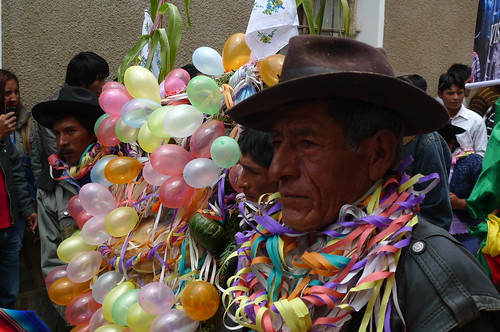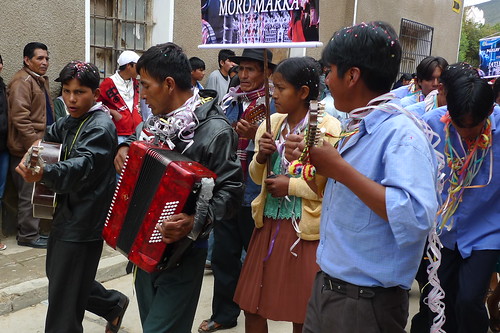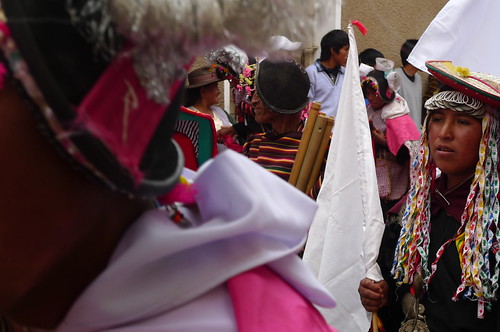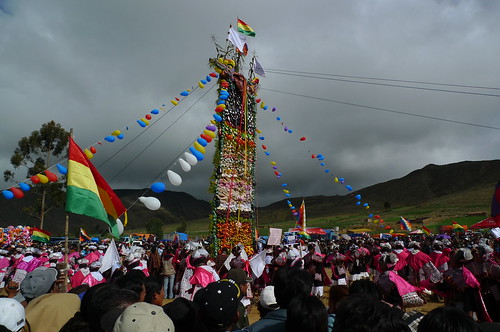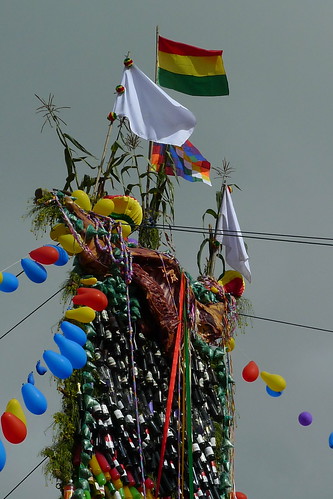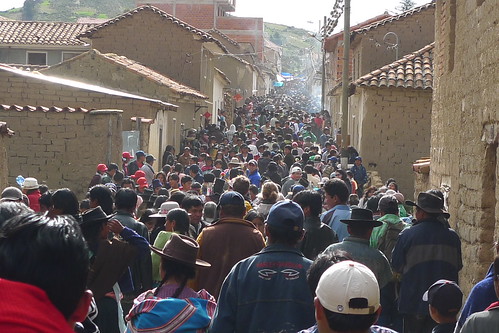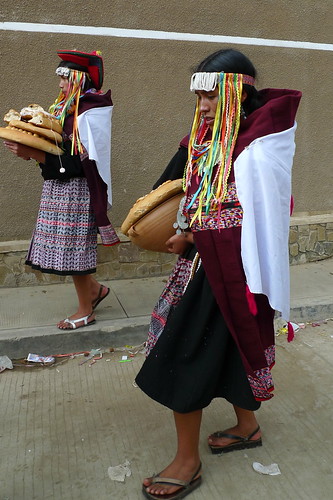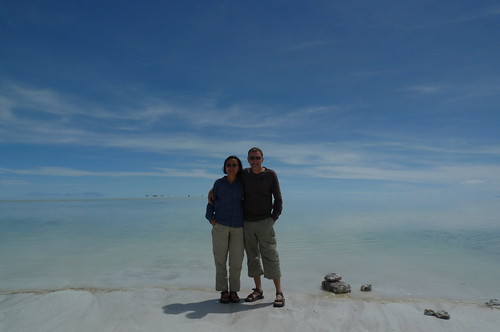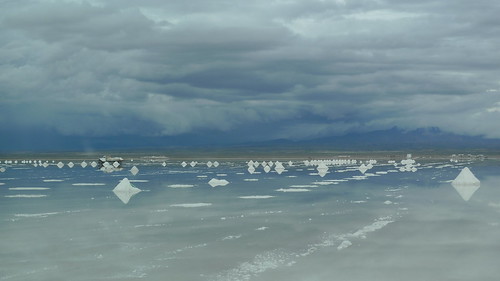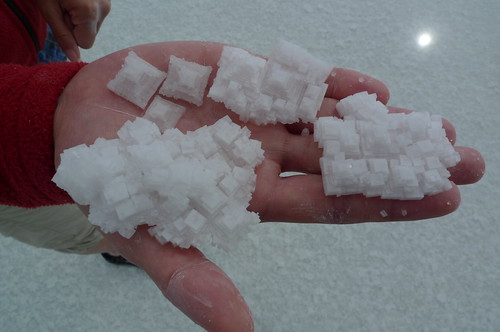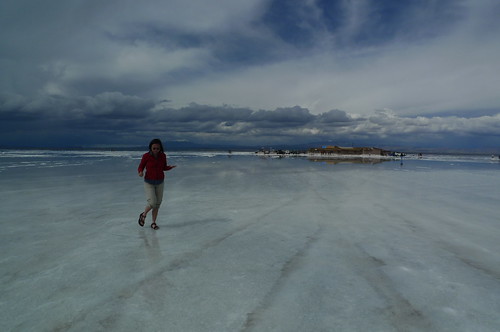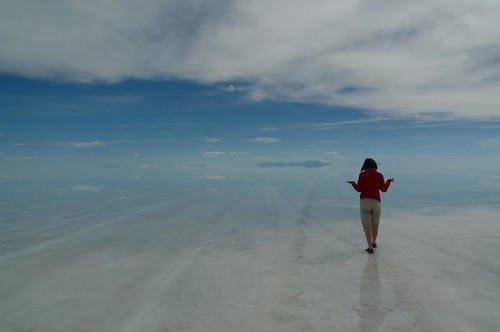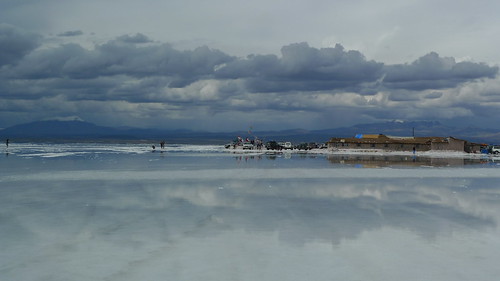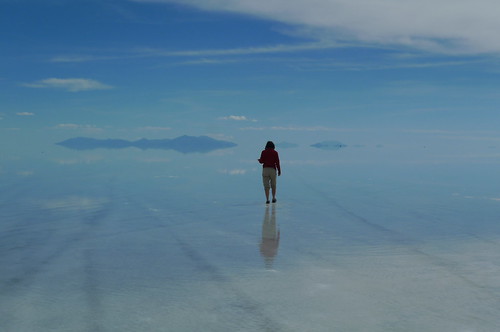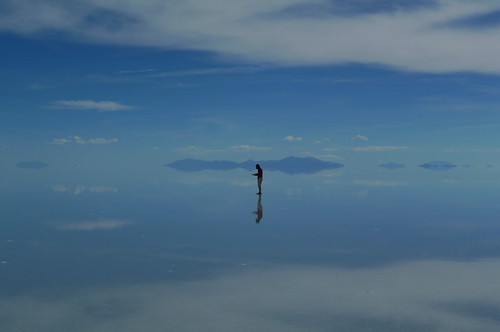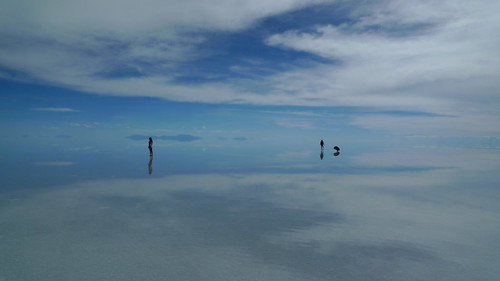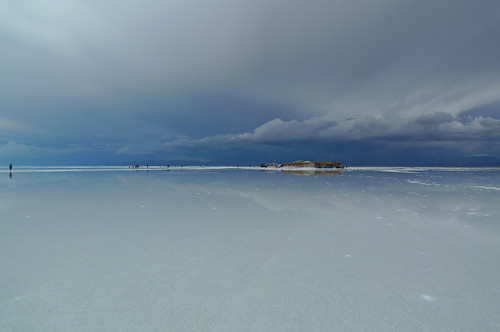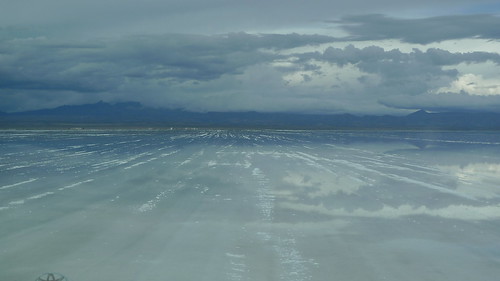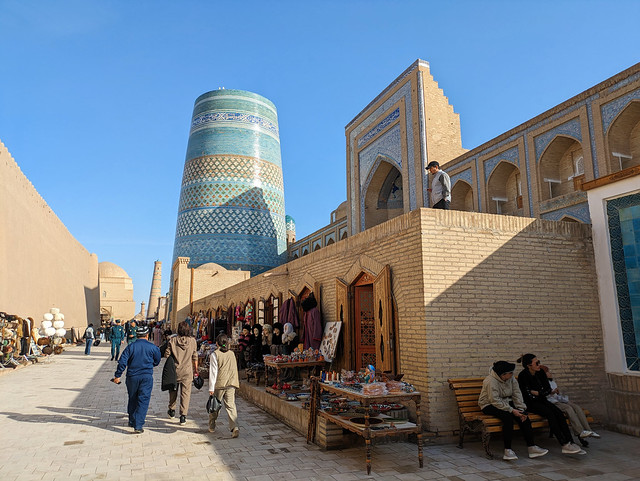In order to avoid the overnight buses out of Sucre, we decided to go north from Potosi to Oruro. At 3700m/12000ft, tourists seem to ascend solely for the Carnival celebration which is supposed be second only to Rio.
Like Potosi, Oruro was founded as a mining town and is still a mining town. Walking around, it is evident that Oruro's fortune is only a fraction of Potosi. At the central plaza we came across a very big march of the miners, followed by their womenfolk at the rear. It made John nervous. Marches can lead to blockades which means no buses and no travel. We walked away from the march. By the time we circled back to the plaza, there was yet another march. This time kids of various ages were marching for vitamin awareness. That made us relax, especially seeing toddlers dressed in fruit costumes. By the time we walked back to our hotel to catch our bus, there was a third group staging and heading to the plaza. This was a small pro-life march with mostly elderly folks.
By now we did not know what to think. We could see how this town can turn up a Carnival second only to Rio. Considering it was a regular Friday, we started to wonder what happens other days. Bolivia is supposed to be the poorest country in South America. Shouldn't they be engaged in more productive time? We also noticed that there are a lot of person-hours minding market stalls selling Chinese-made (75%), Brazilian-made (15%), and US-charity (10%) goods. We also seemed to come across disproportionally large number of lawyer's offices. Development issues fascinate me.
Like Potosi, Oruro was founded as a mining town and is still a mining town. Walking around, it is evident that Oruro's fortune is only a fraction of Potosi. At the central plaza we came across a very big march of the miners, followed by their womenfolk at the rear. It made John nervous. Marches can lead to blockades which means no buses and no travel. We walked away from the march. By the time we circled back to the plaza, there was yet another march. This time kids of various ages were marching for vitamin awareness. That made us relax, especially seeing toddlers dressed in fruit costumes. By the time we walked back to our hotel to catch our bus, there was a third group staging and heading to the plaza. This was a small pro-life march with mostly elderly folks.
By now we did not know what to think. We could see how this town can turn up a Carnival second only to Rio. Considering it was a regular Friday, we started to wonder what happens other days. Bolivia is supposed to be the poorest country in South America. Shouldn't they be engaged in more productive time? We also noticed that there are a lot of person-hours minding market stalls selling Chinese-made (75%), Brazilian-made (15%), and US-charity (10%) goods. We also seemed to come across disproportionally large number of lawyer's offices. Development issues fascinate me.
Miners and families march.
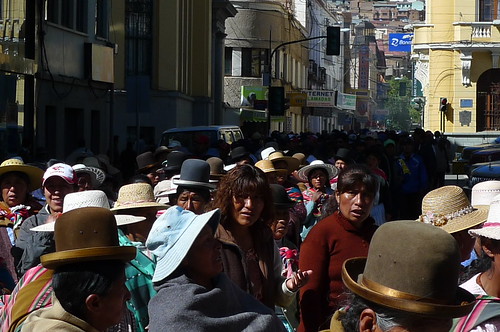
Toddler's march for Vitamin Awareness.
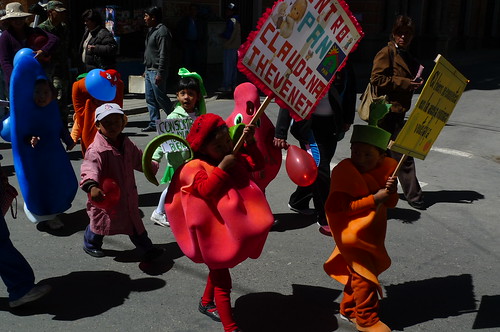
Pro-Life march.
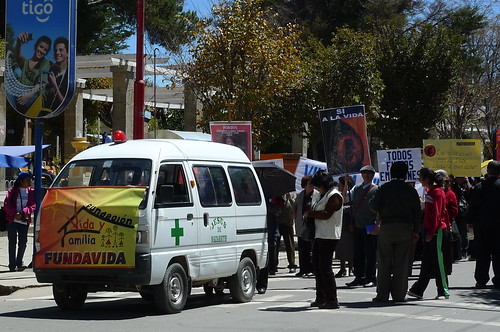
Witches brew for sale in the Fermin Lopez Mercado.

Memorial Faro de Conchupata where Bolivia's red, gold and green flag was first raised.
